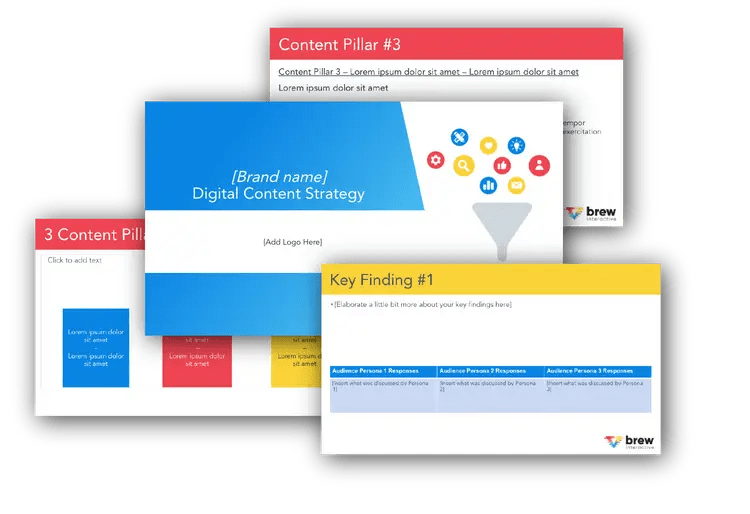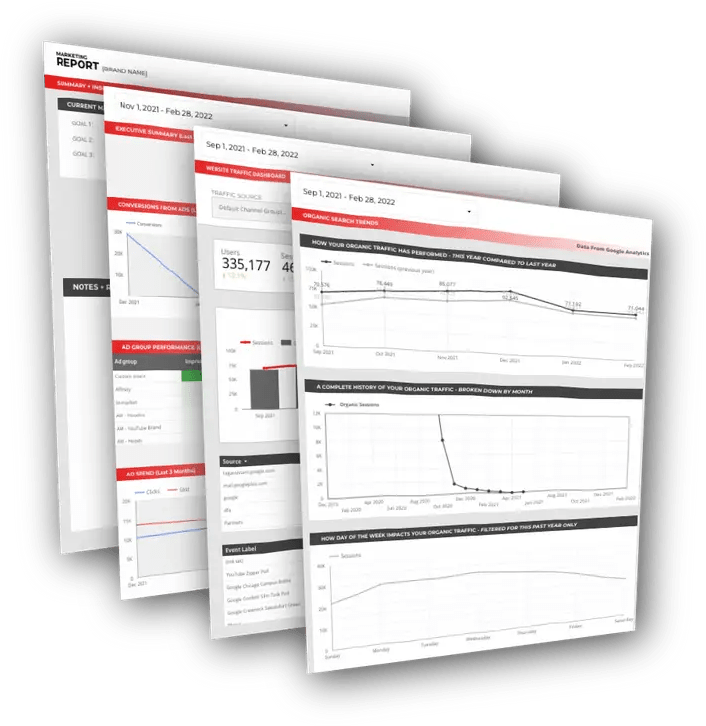Segmentation is an often overlooked and undervalued aspect of B2B marketing.
Segmentation itself isn’t necessarily a lead generation or lead nurturing method, and it’s not a channel. It’s more like the secret ingredient no one really sees.
Proper segmentation doesn’t replace your SEO strategy, content marketing plan, or email automation workflow – it enhances them.
But so many B2B marketers don’t know how to segment properly – or they’ve never tried. Those who have tried often implement B2C segmentation methods, which don’t work nearly as well in B2B markets.
In this post, we’ll walk you through:
- The basics of B2B segmentation
- The four primary types of B2B segmentation
- How to decide on how you will segment
- 5 questions to ask yourself to make sure you’ve made the right choice
What Is B2B Segmentation?
Segmentation refers to dividing your target market into approachable groups.
You determine the criteria for segmentation, use data to divide your target market into groups, and then allow those segments to dictate your product offerings, sales approach, and marketing messaging to each group.
Segmentation isn’t a marketing channel in and of itself, but it improves the effectiveness of all other marketing efforts.
One of the simplest examples of segmentation (that you’re probably familiar with) comes in the form of geographics – segmenting your audience based on where they’re located. You may have one market segment in each country you operate. Or if you only do business in one country, you may break your segments down by region.
Doing this helps you visualize your groups of customers, optimize your lead flow, create your sales funnel, organize your sales teams, and likely affects your messaging to each group.
For example, customers in Singapore may be more likely to respond to one kind of messaging while your customers in Japan may be offended or turned off by similar messaging. Or customers in both countries may prefer to work with sales people of their same nationality.
Why is Segmentation Important in B2B?
Segmentation is important because it allows B2B marketers to:
- Visualize their target audience and customers
- Group them according to similarities
- Personalize product offerings
- Implement highly targeted sales and marketing efforts
- Use the segments for content focused account-based marketing campaigns
Using personalization in marketing has been shown time and time again to improve campaign results.
Mailchimp recently looked through their data and compared segmented campaigns with non-segmented campaigns. They looked at 18 million email recipients and determined that segmented email campaigns:
- Saw 14.3% higher open rates.
- Resulted in 2x CTR’s
- 4.6% lower bounce rates
- 9.4% less unsubscribes
Segmentation works.
Where Do You Apply Segmentation?
Once you’ve chosen your method of segmentation, what do you do with it? B2B segmentation can be applied at a few different levels:
- Market / Product (how you approach the market altogether)
- Prospect (how you generate leads)
- Lead (how you nurture or organize your sales team)
- Customer (how you retain)
It can have a big impact on your product itself, your messaging, your content, your lead flow, your sales teams, your sales approach, your account management structure, and your retention strategies.
What Are the Types of B2B Segmentation?
For B2C, the four types of segmentation are: demographics, psychographics, behavioral, and geographic.
However, some of these segmentation methods don’t work quite as well for B2B marketers. For example, segmenting by gender could certainly be an option for B2B, but type of company, industry, and needs are likely to be far more effective.
Here are the four primary types of B2B segmentation:
- Geographics (by location and region)
- Firmographics (by business size, industry, etc…)
- Behavioral (by behaviors, how they make purchase decisions, what they value)
- Needs-Based (by which products / services they need)
Segmenting by Geographics
B2B International actually refers to segmenting by geographics as “convenience” segmenting. Segmenting by geographics is one of the simplest ways to segment, and makes application fairly simple.
If you can use a CRM or map to visualize where your customers and prospects are located, then you can quickly identify the best way to segment.
Using geographics to segment makes sense if you rely heavily on sales teams, send time-sensitive communications, or your marketing messaging could be easily misinterpreted among different cultures or languages.
You may choose to segment based on:
- Country. If you operate in a handful of countries, this often makes the most sense.
- Region. If you operate in a large number of countries in similar time zones, it may make more sense to segment by region.
- Language. Similar to regional segmentation, if you operate in many countries, it might be most convenient to segment by primary spoken language.
- Cultural Preferences. If you operate in different countries with vastly different cultures, this may make sense for you, and protect you from offending certain groups.
- Time Zone. If you operate across the globe, and you rely heavily on a sales team for lead nurturing a, segmenting by time zone makes a lot of sense.
Pros: Segmentation is simple, implementation is straightforward, relevant data is very easy to collect
Cons: The conclusions you can draw are limited, messaging can be personalized, but will be surface-level (only based on location or language)
Segmenting by Firmographics
Segmenting by firmographics is one step up from geographics in terms of ease and effectiveness. Rather than looking strictly at location and language, you can begin to segment by more meaningful attributes.
Much like geographics, pertinent data for firmographics is pretty easy and inexpensive to come by.
Segmenting by firmographics makes sense if you work with a range of different industries, size of companies, types of companies, and sophistication of companies.
You may choose to segment based on:
- Size of Company. Size of company often indicates their sophistication, organizational structure, and the role of employee you would be working with.
- Revenue of Company. Revenue often indicates the needs and quality of a company.
- Industry. This makes a lot of sense if you work with a range of different industries and need to approach each differently.
Pros: Data is easy to find and inexpensive, segments are easily translatable to the sales team, and marketing campaigns can be personalized with little trouble.
Cons: Though these segments are more meaningful and effective than geographics, they still may not indicate much about a company’s fit or needs.
Segmenting by Behaviours
Behavior-based segmentation focuses on how customers act. What are their methods for researching and how are they currently interacting with your brand?
A lot of the data needed to make these segmentation decisions can be gathered through site tracking, lead scoring (using a CRM / marketing automation tool), or web analytics. You can also look through deals to see how clients went about making their purchase decision.
Not sure where to start when it comes to your content strategy? Struggling to gain traction? Grab our free B2B content strategy template to help you document your strategy.
Free B2B Content Strategy Template
You may choose to segment based on:
- Source Channel. You can group based on referrals, organic traffic, or paid campaigns.
- Engagement Style. You can group based on those who frequently submit RFPs and those who look for advice and guidance.
- Content Engaged. You can group based on what type and category of content they spend the most time with.
- Technologies Used. You can group based on the types of tech they used –both related to your offering and unrelated.
Pros: If you have web analytics or site tracking set up, this data can be easy to gather and – at times – very insightful.
Cons: Behavior doesn’t always indicate need or product fit. Someone could read every blog on your site, but have no interest in working with you.
Segmenting by Needs
Needs-based segmentation groups your customers based on what they’re looking for in a product or service. A segmentation based on needs gets to the heart of marketing.
That said, segmenting by needs is a bit more sophisticated and meaningful than geographics and firmographics, which means the data required to segment your market typically can’t be found or bought online – it requires some manual work and data entry (or some automation).
One of the best ways to identify and categorize needs is by interviewing current customers to learn their biggest motivations for working with you and criteria in making their purchase decision.
The two best ways to segment by needs are:
- Buying Motivations. Are they budget conscious, productivity focused, results oriented, etc?
- Pain Points. What specific pain points does your audience have that your product solves?
The four most common needs-based segmentations are:
- Price-focused
- Service-focused
- Quality-focused
- Partnership-focused
Pros: Involves very meaningful attributes, when implemented well it can prove very effective
Cons: Difficult to implement, tough to obtain necessary data, and it can often be hard to relay vision to the sales team
How To Decide How You Will Segment?
Now that you have a good idea of the types of B2B segmentation, you’re probably wondering how to make a sound decision.
- Make sure your database / CRM is up-to-date. You need up-to-date data in order to understand your existing customers and audience.
- Start by looking at existing customers and use common sense. As you evaluate your existing customers and target prospects, your segmentation may be immediately obvious. For example, if you already target a single industry with a single product in a single location, you can immediately rule out geographics and needs-based. If you serve companies of all sizes, firmographics may be the best choice.
- If no pattern stands out, start by considering firmographics. This is a great first step for many businesses. If you serve a variety of business types, sizes, and industries – firmographics might be for you.
- Look for a needs-based segmentation next. If a firmographics approach appears obvious, go for it. But if it doesn’t appear immediately helpful or all that easy to implement, your next step should be to try a needs-based approach. Evaluate the common pain points and work with your team to identify the top 3-5 primary pain points. If everyone agrees and you can split your current client base up relatively evenly – needs-based is for you. If you aren’t sure what kinds of needs your audience has and what differentiates them, do some research. Consider interviewing current and past clients.
- Try behavioral segmentation. If a needs-based approach isn’t doable, behavioral segmentation should be your next option. Sometimes B2B purchasing is done by a group of people whose needs are always changing. But they may always approach the buying process the same way. For instance, some businesses always issue RFP’s with specific scopes, whereas others are open to suggestions and guidance. These are two great segments.
- Consider complex clusters. If you really want to set yourself apart from competition and get hyper-personalized, you should consider multiple layers. For example, perhaps you serve three different countries with different languages. This is your first layer. Next, you serve three unique industries, your next layer. Of these industries, there are two pain points that always lead to purchase. So now you have 18 highly segmented clusters.
You’ll notice we didn’t mention geographic segmentation. This is a great option, but it’s the simplest and the least likely to lead to any kind of advantage over your competitors.
That said, geographic segmentation is a fine place to start – especially if you serve a variety of regions or languages. It’s also a perfect starting point if you don’t have the resources or time to devote to a more complex segmentation strategy.
Will Your Segments Be Effective?
Once you’ve made a decision, run your strategy through these questions to ensure it’s the right fit for your business.
Are they clear enough? Is it obvious which segment a business should fall into? There may always be some customers who toe the line between two segments, but if a significant number of businesses’ segments are vague, you may not have chosen a meaningful enough strategy.
Are they meaningful enough? In other words, will your sales and marketing strategy change in any way based on a segment? If not, your strategy might be sound, but it won’t be effective.
Are they big enough? This is important. Ten segments with just a few customers or target accounts in each will require far too much work and effort. Try to cut the number of your segments in half.
Let the Data Speak for Itself
Lastly, give your segmentation choice some time. Are you finding marketing efforts more effective? Are more leads entering your sales pipeline? Is your sales team seeing more success closing? If yes, then you’ve probably made a great choice.
If not, it could be worth reconsidering your segmentation strategy.

Free DataStudio Marketing Report
Improve your marketing reporting with our free DataStudio template that pulls data from Analytics, Google Ads, and Search Console to get a 360 degree view of your digital performance.





